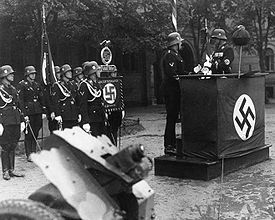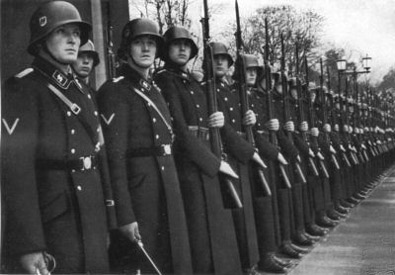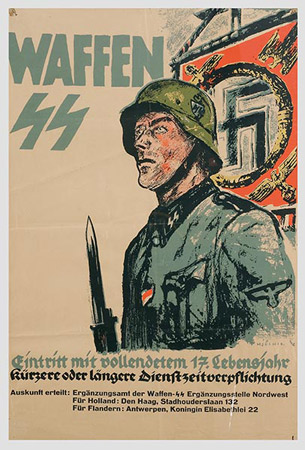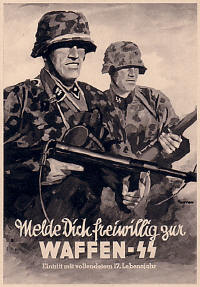Translated as "order police", Ordnungspolizei referred to uniformed police units formed by an act of the German Interior Ministry in the summer of 1936. The act decreed that the regular German police forces were to be absorbed into the SS, which would then incorporate all local, state, and national level law enforcement agencies.
The police were divided into the Ordnungspolizei (Orpo or regular police) and the Sicherheitspolizei (Sipo or security police). The Orpo assumed duties of regular uniformed law enforcement while the Sipo consisted of the secret state police Geheime-Staatspolizei or Gestapo and criminal investigation police Kriminalpolizei or Kripo. The Gestapo was a corps of professional detectives involved in political police duties and the task of the Kriminalpolizei was fighting crime. On September 1939, the Sipo was combined with the secret service of the SS Sicherheitsdienst (SD) into the Main Office for Security of the Reich the Reichssicherheitshauptamt (RSHA). RSHA symbolize the narrow connection between SS (party organization) and police (state organization).






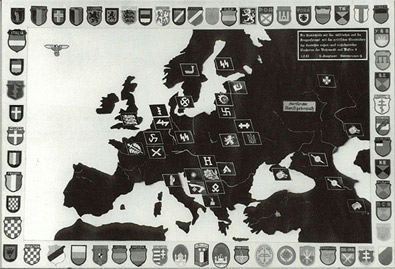 The
Waffen-SS (German for "Armed SS", literally "Weapons SS") was
the combat arm of the Schutzstaffel ("Protective
Squadron") or SS, an organ of the Nazi Party. The Waffen-SS saw
action throughout World War II and grew from three regiments to over
38 divisions, and served alongside the Wehrmacht Heer regular army,
but was never formally part of it. It was Adolf Hitler's will that
the Waffen-SS never be integrated into the army: it was to remain
the armed wing of the Party and to become an elite police force once
the war was over.
The
Waffen-SS (German for "Armed SS", literally "Weapons SS") was
the combat arm of the Schutzstaffel ("Protective
Squadron") or SS, an organ of the Nazi Party. The Waffen-SS saw
action throughout World War II and grew from three regiments to over
38 divisions, and served alongside the Wehrmacht Heer regular army,
but was never formally part of it. It was Adolf Hitler's will that
the Waffen-SS never be integrated into the army: it was to remain
the armed wing of the Party and to become an elite police force once
the war was over.










